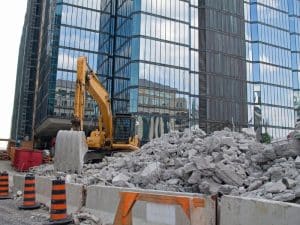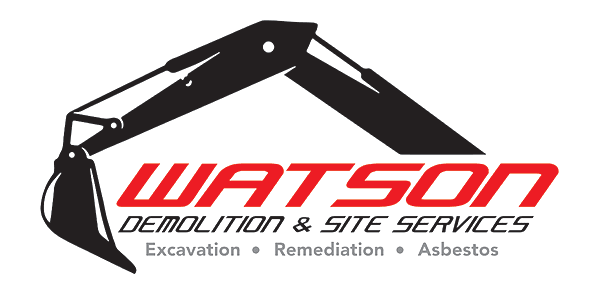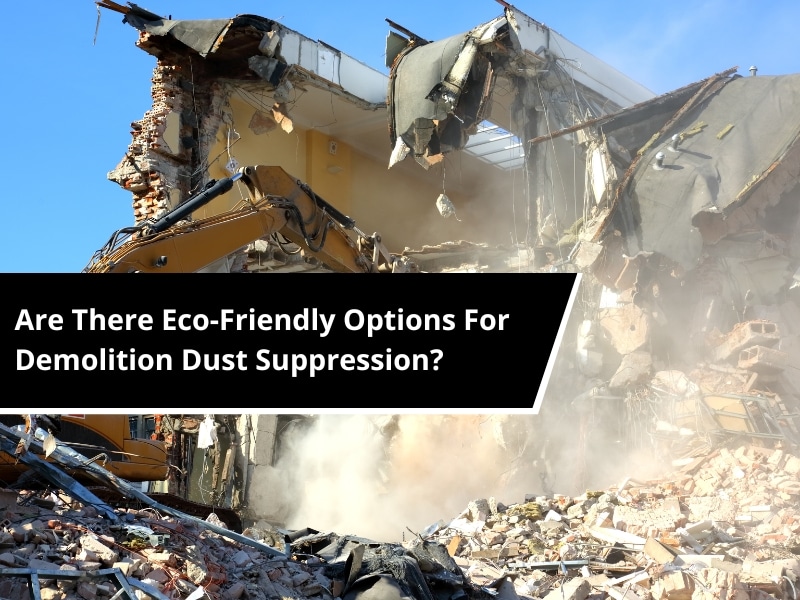Whether residential, commercial, or industrial, demolition projects are often accompanied by dust, posing environmental and health risks. Dust suppression is a critical aspect of maintaining safety and environmental responsibility on-site. With an increasing focus on sustainability, the construction industry is looking for eco-friendly solutions to manage demolition dust. This article explores the eco-friendly options available for demolition dust suppression, why they matter, and how you can implement them effectively in your projects.
What are the common dust suppression methods used in demolition?
Before diving into eco-friendly alternatives, it’s essential to understand the conventional methods used for dust suppression in demolition projects. These traditional methods include:
- Water spraying: One of the most common techniques, water spraying, involves using hoses or automated systems to spray water over debris and demolition areas to control dust.
- Dust screens: Temporary barriers, often made of mesh, are placed around demolition sites to prevent dust from escaping into the surrounding environment.
- Dust suppression chemicals: Specialised chemicals are applied to bind dust particles together, making them heavier and less likely to become airborne.
- Vacuum systems: Heavy-duty vacuums are used on-site to collect dust and debris, reducing airborne particles.
While these methods can be effective, they may not always be the most environmentally friendly options.
Why should you consider eco-friendly dust suppression?
Eco-friendly dust suppression solutions benefit both the environment and your construction project. Here are some reasons why you should consider these options:
- Environmental impact: Traditional methods like chemical dust suppressants can harm surrounding ecosystems. Eco-friendly solutions reduce the risk of soil, water, and air contamination.
- Health and safety: The health impacts of demolition dust can be severe, leading to respiratory issues, eye irritation, and long-term diseases like asthma or lung cancer if proper dust control measures are not implemented.
- Regulatory compliance: Many regions now have stricter environmental regulations. Eco-friendly dust suppression methods help you stay compliant with local laws and avoid fines.
- Sustainability: As demand for sustainable construction practices grows, using eco-friendly methods reflects a commitment to green building practices and sustainability.
How effective are eco-friendly options in reducing demolition dust?
Eco-friendly dust suppression methods have proven to be just as effective as traditional methods. Here’s how:

- Water-based solutions: Water is a natural dust suppressant, and when applied properly, it keeps particles from becoming airborne without using harmful chemicals.
- Plant-based dust suppressants: These solutions use organic materials like plant gums and sugars that are non-toxic and biodegradable. As a result, they effectively bind dust particles and reduce the spread of dust without harming the environment.
- Hydroseeding: In larger demolition projects, hydroseeding involves spraying a mixture of water, seed, and other organic materials to stabilise the soil and prevent dust from forming.
- Electrostatic dust control: This technology uses electric fields to attract and bind dust particles, preventing them from spreading without chemicals.
When used correctly, these eco-friendly methods are highly effective in controlling dust while reducing the environmental impact.
How does eco-friendly dust suppression contribute to safety on your site?
Dust is not only an environmental issue; it’s also a safety hazard. Prolonged exposure to dust can cause respiratory problems, while excessive dust in the air can reduce visibility, leading to accidents. Eco-friendly dust suppression methods help maintain a safe working environment in the following ways:
- Improved air quality: Eco-friendly suppression methods help maintain healthy air quality for workers by keeping dust levels low and reducing the risk of respiratory illnesses.
- Enhanced visibility: Dust can obstruct vision on a demolition site, making it harder for workers to see potential hazards. Eco-friendly solutions like misting systems improve visibility.
- Less slippery surfaces: Some dust control methods, such as water spraying, can prevent dust from settling and creating slippery surfaces that pose a risk of falls.
- Reduced exposure: Non-toxic and biodegradable dust suppressants reduce workers’ exposure to harmful chemicals, enhancing overall safety on-site.
How can you incorporate eco-friendly dust control into your project?
Incorporating eco-friendly dust suppression techniques into your demolition project is easier than you might think. Here are some steps you can take:
- Assess the site: Before starting your demolition, assess the area to determine which eco-friendly dust suppression methods will be most effective, depending on the size and type of demolition work involved. Additionally, consider factors like weather conditions and site accessibility to ensure the chosen methods provide optimal results.
- Choose the right equipment: Depending on your project, you may need to invest in eco-friendly dust suppression equipment, such as misting systems or vacuum extractors.
- Use eco-friendly materials: Opt for plant-based or water-based dust control products instead of harmful chemicals that can damage the environment.
- Follow regulations: Stay up to date with local environmental regulations to ensure your dust control methods are compliant with laws and standards.
- Train your team: Ensure that all team members are aware of eco-friendly practices and understand how to implement them properly to ensure safety and effectiveness.
Creating an effective dust control plan for demolition is essential for minimising environmental impact and ensuring site safety.
What is the cost of implementing eco-friendly dust suppression?
The cost of eco-friendly dust suppression varies depending on several factors, such as the size of the site and the specific methods or equipment used. Generally, eco-friendly solutions are cost-competitive with traditional methods. For example:
- Water spraying: This method is relatively inexpensive, especially when using recycled water.
- Plant-based suppressants: These products can be slightly more expensive than traditional chemicals, but they are still affordable and have long-term environmental benefits.
- Misting systems: While the initial investment in misting systems may be higher, the long-term benefits of improved air quality and safety can make them worthwhile.
- Dust extractors: High-quality dust extractors can be an additional cost, but they help improve safety and reduce dust exposure, making them a valuable investment in the long run.
Overall, the cost of eco-friendly dust suppression is an investment in both safety and sustainability, and it can be integrated into most demolition budgets.
How can you ensure the proper execution of eco-friendly dust suppression?
Proper execution of eco-friendly dust suppression requires planning, training, and monitoring. Here’s how you can ensure success:
- Pre-project planning: Identify potential dust hotspots and plan dust control measures in advance.
- Monitor effectiveness: Regularly check dust levels on-site to ensure your dust control methods work effectively.
- Stay flexible: Be prepared to adjust your dust suppression techniques as needed based on weather conditions, site conditions, and project changes.
- Incorporate feedback: Gather feedback from workers to assess dust control methods’ effectiveness and make necessary adjustments.

Additionally, it’s crucial to adhere to demolition dust control standards to ensure compliance with local regulations and protect both worker health and the surrounding environment during demolition projects.
Why choose sustainable demolition and site services for your next project?
Choosing sustainable demolition and site services for your project offers numerous benefits:
- Compliance with regulations: Ensure that your project meets all environmental standards and regulations.
- Improved safety: Eco-friendly dust suppression methods contribute to a safer work environment for everyone on-site.
- Cost-effective solutions: While the initial investment may seem high, eco-friendly dust control can save money in the long run by preventing environmental damage and reducing health risks.
- Positive environmental impact: By using sustainable methods, you contribute to preserving the environment for future generations.
Contact Watson Demolition & Site Services for your next project
Watson Demolition & Site Services is a leading provider of comprehensive demolition, excavation, and site preparation solutions throughout Newcastle, the Hunter Valley, Sydney, and the Central Coast. With years of experience, a commitment to safety, and a focus on eco-friendly solutions, we ensure that your demolition projects are completed efficiently, safely, and sustainably. Furthermore, our team is known for their professionalism, attention to detail, and dedication to providing high-quality service at competitive prices.
Don’t just take our word for it—many of our clients have praised our approach, highlighting our professionalism, thoroughness, and friendly team. If you’re looking for an experienced, reliable partner for your next project, talk to Watson Demolition & Site Services for a free consultation and quote today!
Frequently Asked Questions
- What is eco-friendly dust suppression in demolition?
Eco-friendly dust suppression refers to using sustainable and natural methods to control dust during demolition projects. These methods aim to reduce dust’s environmental impact while ensuring workers’ and nearby communities’ safety and health.
- How does eco-friendly dust suppression help the environment?
Eco-friendly dust suppression reduces airborne particulate matter that can contribute to pollution and health problems.
- Are there any environmental regulations for dust suppression in demolition?
Yes, local environmental regulations require construction and demolition projects to control dust emissions. These regulations aim to minimise air pollution and protect public health.
- Can eco-friendly dust suppression be used for large-scale industrial demolition projects?
Absolutely. Eco-friendly dust suppression methods can be effectively scaled for large industrial demolition projects.
- What are the long-term benefits of using eco-friendly dust suppression?
The long-term benefits of eco-friendly dust suppression include:
-
- Reduced environmental impact through the use of natural, non-toxic materials.
- Improved worker safety by decreasing exposure to harmful airborne particles.
- Cost savings over time due to less frequent application and maintenance.
- Enhanced compliance with local environmental and health regulations.
- What eco-friendly dust suppression methods are most effective for demolition sites in urban areas?
The most effective eco-friendly methods include:
-
- Water spraying
- Biodegradable suppressants
- Green barriers
- Is eco-friendly dust suppression suitable for residential demolition projects?
Yes, eco-friendly dust suppression is highly ideal for residential demolition projects.
- What are the key factors to consider when choosing eco-friendly dust suppression for my demolition project?
When selecting eco-friendly dust suppression methods, consider the following:
-
- The size and scope of the project.
- Local environmental regulations.
- The type of materials being demolished (which may affect dust generation).
- The sustainability of the solution, including the use of non-toxic, biodegradable agents.
- The cost-effectiveness of the solution in relation to the project’s budget.
- How can Watson Demolition & Site Services assist with eco-friendly dust suppression?
Watson Demolition & Site Services are experts in implementing eco-friendly dust suppression techniques across all commercial demolition projects. Moreover, our experienced team uses industry-leading, sustainable solutions to control dust effectively, ensuring a safer, cleaner, and more environmentally responsible project.

